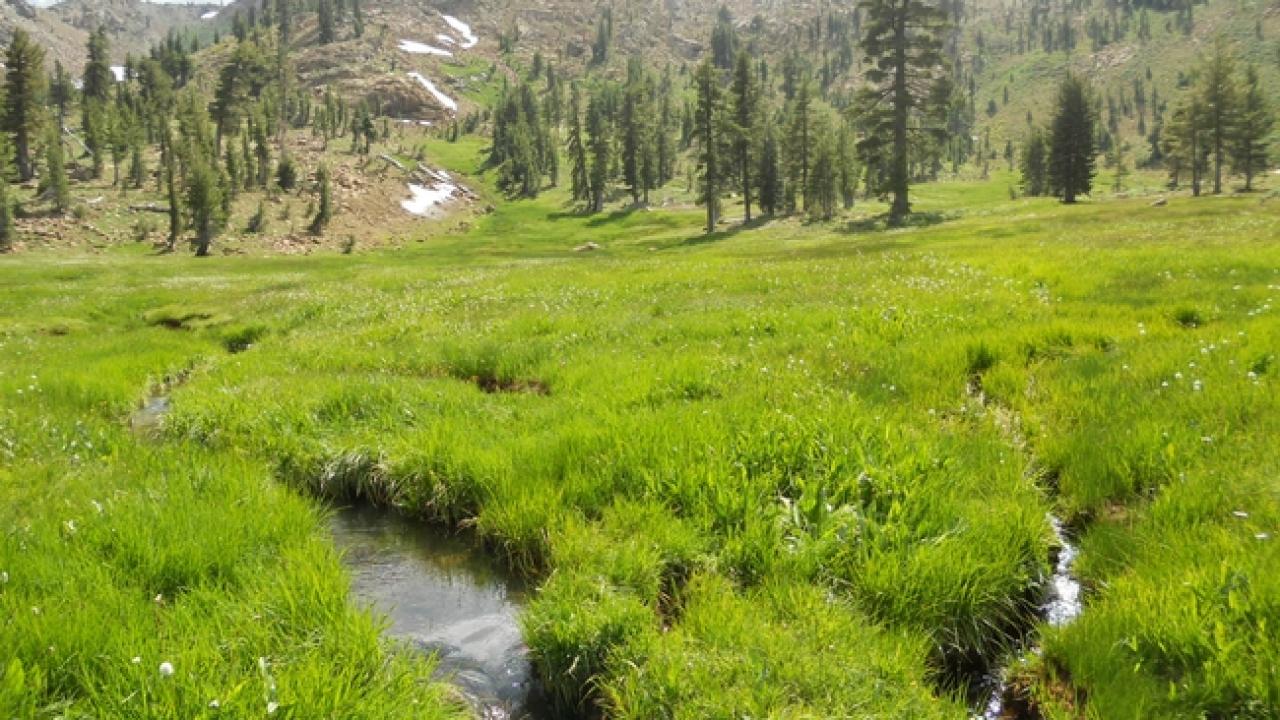
Yosemite toad undeterred by grazing cows
The relationship between cattle grazing and numbers of Yosemite toads.
If you’re trying to save Yosemite toads, keeping large animals with hooves such as cows away from the small squishable amphibians would seem like a good start. University of California scientists conducted research to confirm such suspicions. Their research revealed that fencing off grazing cattle didn’t benefit the Yosemite toad, but increased meadow wetness did.
Amphibians are in decline globally. The Yosemite toad was once prevalent in the high Sierra including Yosemite National Park, where it was first discovered and after which it is named. Since the early 1980s, the amphibian’s population and habitat have plummeted.
In the Sierra Nevada Mountains, where livestock graze among toad habitat, UC scientists erected fences to keep the cattle out of toad breeding and rearing areas and studied the effects on Yosemite toad populations for five years.
“The Yosemite toad has been proposed for listing under the Endangered Species Act,” said Ken Tate, UC Cooperative Extension specialist in the Department of Plant Sciences at UC Davis and a principal investigator for the study. “One of the potential factors proposed to be driving the species decline is cattle grazing. However, our research does not support this.”
The researchers found that meadow wetness played a greater role in Yosemite toad presence.
"The toads use wetter areas and the cattle use drier meadow areas, which provide better forage,” Tate said.
“Determining the Effects of Cattle Grazing Treatments on Yosemite Toads (Anaxyrus [=Bufo] canorus) in Montane Meadows” was published in the November 2013 issue of PLOS One. Tate’s coauthors on the study are Susan K. McIlroy, research scientist with U.S. Geological Survey in Boise, Idaho; Amy J. Lind, research wildlife biologist with the U.S. Forest Service Pacific Southwest Research Station; Barbara H. Allen-Diaz, professor in the Department of Environmental Science, Policy and Management at UC Berkeley; Leslie M. Roche, postdoctoral researcher in the Department of Plant Sciences at UC Davis; William E. Frost, UC Cooperative Extension advisor; and Rob L. Grasso, fishery and aquatic ecologist with U.S. Forest Service Eldorado National Forest.
This is the latest of three articles examining the relationship between cattle grazing and growth in numbers of Yosemite toads. In April 2012, PLOS One published “Cattle Grazing and Conservation of a Meadow-Dependent Amphibian Species in the Sierra Nevada,” online at http://www.plosone.org/article/info%3Adoi/10.1371/journal.pone.0035734. The first article “Cattle Grazing, Mountain Meadows, and Sensitive Species,” written in 2011, is online athttp://rangelandwatersheds.ucdavis.edu/main/projects.htm.
(This article, written by Pam Kan-Rice, is reprinted from Green Blog, UC Agriculture and Natural Resources.)